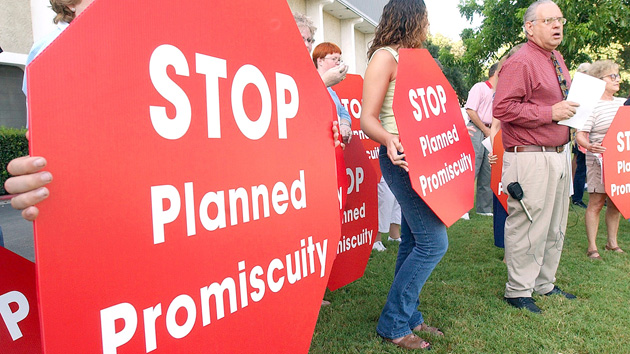
<a href="http://www.shutterstock.com/gallery-434191p1.html">Lucky Business</a>/Shutterstock
It’s 2016, and teens are receiving less formal sex education than ever before—and young women and rural teens are especially underserved.
A new study from the Guttmacher Institute, a reproductive health and sexuality think tank, shows that from 2011 to 2013, 43 percent of adolescent females and 57 percent of adolescent males were not instructed on how to use contraception before they had sex for the first time.
During those years, only 60 percent of girls received instruction about birth control, a 10 percent drop compared with the number of girls receiving instruction from 2006 to 2010. And girls were much more likely than boys to learn about where to access birth control, while boys were more likely to learn how to use a condom.
“Historically, girls have been more likely than boys to receive formal sex education,” says Laura Lindberg, the lead author of the study. “Boys and girls receive very different targeted messages—the girls are taught to just say no, and the boys are taught not to ask—and this report of a gender differential seems to be bad news.”
And in an age of increasing awareness surrounding sexual assault, girls in the classroom are hearing less about how to decline sex from an interested potential partner—instruction fell 10 percent from 2006 to 2013, from 70 percent to 60 percent. Instruction for teenage boys fell from 61 percent to 55 percent.
Within the broad subject of sex education, specific attention to education on preventing sexually transmitted diseases has become more limited as well. Between 2006 and 2013, instruction among adolescent females dropped from 94 percent to 90 percent regarding STD prevention and general knowledge. Recent numbers from the Centers for Disease Control and Prevention show that STD rates are on the rise, and 15- to 24-year-olds account for half of all new infections.
Where a teen lives also plays a significant role in the kind of sex education he or she receives. As I reported previously for Mother Jones, teens in rural Tennessee are not getting specific information about contraception or healthy sexuality, and the numbers run by the Guttmacher Institute show the same geographic disparities. Teens in metropolitan areas are nearly twice as likely as rural teens to receive formal sex education, and teens in suburban areas are more than three times as likely to receive formal sex education than rural teens.
“We were surprised here,” Lindberg says, by the “widespread declines in sex ed for teens in rural areas.“ She explained that because rural areas are “generally more conservative,” sex education itself can become a controversial issue, especially when there are fewer available resources.
A study from the National Campaign to Prevent Teen and Unplanned Pregnancy last year found that even though teen pregnancy has generally experienced a steep decline over the past two decades, teen birth rates in rural areas are a third higher than in the rest of the country, and rates have been falling at a slower pace compared with rates in metropolitan areas.
“In the end, decisions about sex education are occurring on very local levels in these areas,” Lindberg said. “It’s the principals and the school boards that are making the decisions.”
Lindberg notes the number of parents talking to teens about sex has remained steady, but the conversation is often one-sided. Only about half of teens talked to their parents about birth control, Lindberg says, and that’s not enough.
“Sex education is not a one-time, burdensome conversation that you can push your way through once and be done,” Lindberg says. Often values and information about the subject aren’t even communicated in words. “Whether you’re talking to them or not, you’re giving them information about your values about sex.”
















